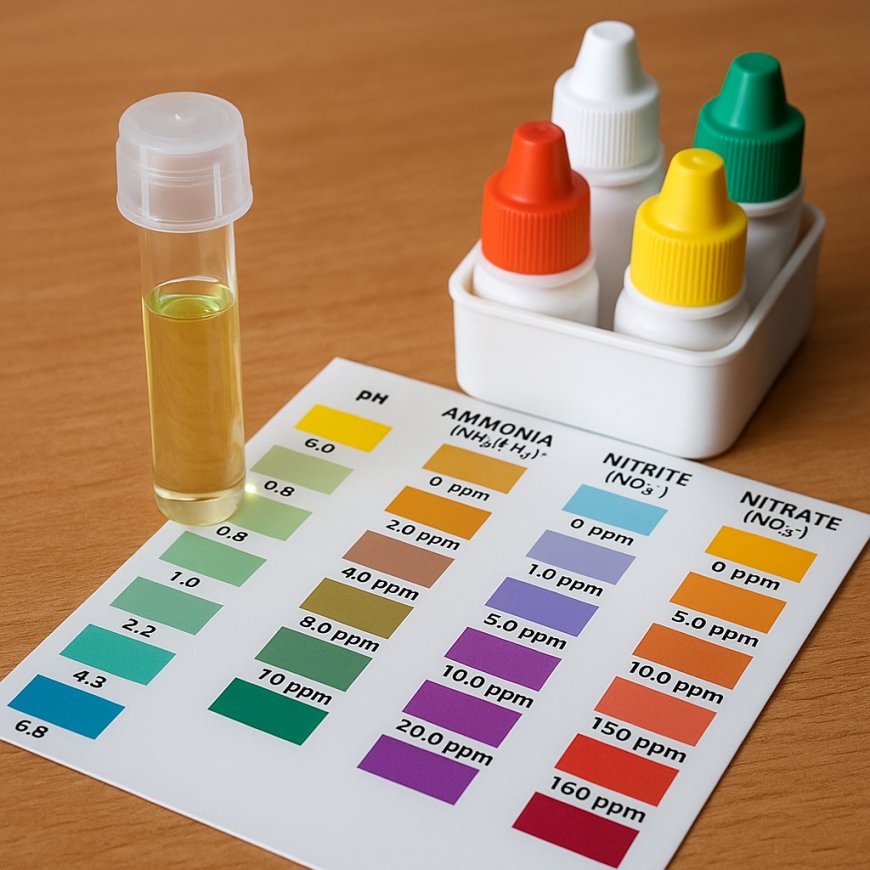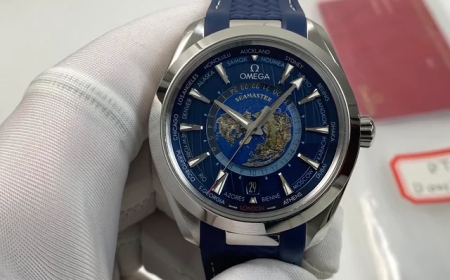Aquarium Water Test Kit Buying Tips: What to Check Before You Buy

Maintaining a thriving aquarium isnt just about beautiful dcor or the right fishit's about creating a stable, healthy environment. At the heart of that stability is one critical tool: the KwikPets aquarium water test kit. If youve ever dealt with cloudy water, sick fish, or unexplained algae blooms, chances are your water parameters were off. In this guide, well explore how to choose the right test kit, what it should include, and why it's one of the most vital supplies for fish keepers in the USA.
Understanding the Role of an Aquarium Water Test Kit
An aquarium water test kit helps you monitor the chemical balance in your tank. Since aquarium water is a closed system, waste from fish, decaying food, and other materials can quickly turn toxic without regular checks.
These kits test for vital parameters like:
-
Ammonia
-
Nitrite
-
Nitrate
-
pH
-
General and Carbonate Hardness (GH and KH)
-
Phosphates
-
Chlorine/Chloramine
With consistent testing, you can prevent fish illness, algae blooms, and even fatalities.
Key Parameters Every Kit Should Test
When buying your first (or next) water test kit, make sure it includes the following tests:
-
Ammonia Even trace amounts can be deadly to fish.
-
Nitrite/Nitrate Indicators of tank cycling and waste buildup.
-
pH Affects fish stress levels and biological processes.
-
GH/KH Water hardness impacts shell growth in invertebrates and pH stability.
-
Chlorine/Chloramine Toxic chemicals are often found in tap water.
Depending on your tank type, you may also want to test:
-
Phosphate Too much can fuel algae overgrowth.
-
Copper Especially in reef tanks where corals are sensitive.
Kits that include color-coded comparison charts or digital readouts are ideal for accuracy and ease of use.
Different Types of Aquarium Water Test Kits
There are three main types of test kits youll encounter:
1. Liquid Test Kits
-
Most accurate
-
Economical for long-term use
-
Require careful measurement and color matching
2. Test Strips
-
Easy to use
-
Less precise
-
Best for quick spot checks
3. Digital Testers
-
Very accurate
-
Higher cost
-
Require calibration and occasional maintenance
If youre serious about aquarium care, a liquid aquarium water test kit offers the best balance between precision and affordability.
Choosing Between Freshwater and Saltwater Kits
Freshwater and saltwater aquariums have different requirements. A KwikPets water testing kit for aquarium care in a freshwater setup might not measure all the elements needed in a reef tank.
-
Freshwater Kits: Test pH, ammonia, nitrites, nitrates, and GH/KH.
-
Saltwater Kits: Also include tests for calcium, magnesium, and alkalinity.
-
Reef Kits: Advanced versions tailored to coral needs.
Always select a kit that matches your tank type, and dont rely on general kits for sensitive species or reef environments.
Common Mistakes to Avoid When Testing Water
-
Not shaking test reagents properly
-
Using expired test kits
-
Contaminating the test vial with dirty hands or tools
-
Reading color charts under poor lighting
-
Testing at inconsistent times
Avoid these to ensure your aquarium water test kit provides reliable results. Clean tools and follow instructions closely.
Top Brands Recommended by USA Aquarists
Experienced aquarists across the USA favor the following brands:
-
API: Affordable and beginner-friendly liquid kits
-
Tetra: Known for accurate strip tests
-
Hanna Instruments: High-end digital options for reef tanks
-
Seachem: Precision test kits with detailed instructions
-
Salifert: Popular among saltwater hobbyists for accuracy
? API Freshwater Master Kit on KwikPets
Look for kits with U.S. regulatory compliance and strong reviews within hobbyist communities.
Tips for Interpreting Test Results Accurately
Getting a test result is only step oneyou need to know what to do next.
-
Ammonia/Nitrites: Should be 0 ppm. Anything above is a red flag.
-
Nitrates: Ideally below 20 ppm in freshwater and under 5 ppm for reef tanks.
-
pH: Stable within the appropriate range (6.57.5 for most freshwater fish)
-
GH/KH: Influences water bufferingimportant for tanks with shrimp or snails.
Keep a water quality log to monitor changes over time. This will help diagnose problems early and understand seasonal fluctuations.
How Often Should You Use a Water Testing Kit for Aquarium Health?
The frequency depends on your tanks maturity and stocking level:
-
New tanks: Test daily during the nitrogen cycle (first 46 weeks)
-
Established tanks: Weekly or bi-weekly checks
-
After adding new fish or plants: Test more frequently for a few days
-
If fish appear stressed or sick: Immediate testing is crucial
Regular testing helps you act before problems arise. A reliable aquarium water test kit makes this process seamless.
Whats New in the USA Aquarium Supplies Market?
According to Pet Business and APPA 2024 Trends Report, the demand for smart pet care tools is growing. This includes digital aquarium water testing kits, Bluetooth-enabled sensors, and app-based logging systems.
? Pet Business Aquarium Tech Trends
Other insights:
-
The U.S. aquarium supply market is expected to reach $1.6 billion by 2026
-
Consumers prefer bundled test kits with multi-parameter testing
-
Brands offering eco-friendly packaging and non-toxic reagents are gaining popularity
KwikPets.com and similar USA-based suppliers now offer curated kits for beginners and advanced aquarists alike.
? Kwik Pets Water Test Kits Collection
Conclusion: Testing Is Caring
Owning an aquarium is a rewarding journey, but it requires more than pretty dcor and feeding routines. The unseen environmentthe chemistry of the waterplays a huge role in your aquatic pets wellbeing. A high-quality aquarium water test kit allows you to monitor and maintain this delicate balance with confidence.
Whether you have a freshwater betta tank or a bustling reef aquarium, testing your water regularly can prevent illness, reduce fish loss, and save time and money in the long run.
At Kwik Pets, we understand the importance of proactive pet care. Thats why we offer a variety of water testing kit for aquarium setupsfrom beginner-friendly strips to expert-level reef kitsensuring that every fish keeper has the tools to succeed.
Healthy fish start with healthy water. And healthy water starts with smart testing.
5 FAQs About Aquarium Water Test Kits
Q1. How often should I replace my aquarium water test kit?
Test kits have expiration dates, usually printed on the packaging. Replace them every 612 months for accurate results.
Q2. Is a liquid test kit better than test strips?
Yes, liquid kits tend to be more accurate, especially for critical parameters like ammonia and nitrate.
Q3. Can I use the same test kit for both saltwater and freshwater tanks?
Some kits are universal, but it's best to use species-specific kits. Saltwater tanks require additional parameters, such as calcium and alkalinity.
Q4. What should I do if my ammonia levels are high?
Perform a partial water change, temporarily stop feeding, and add ammonia detoxifiers. Monitor your aquarium water daily using a test kit.
Q5. Where can I purchase a reliable water testing kit for aquarium care in the United States?
Trusted pet supply websites like KwikPets.com offer a wide selection of test kits, including API, Tetra, and Seachem, with fast shipping across the U.S.











































